What is compression anyway?
Lens compression commonly occurs when you take a picture using a telephoto lens. This is simply because there tends to be a greater distance between the you and your subject than there would be if you were using a wide angle lens. |
 Agama Lizard, TanzaniaNotice the soft focus at the lizard's tail. This is because I am standing far away and zoomed in close, at 400 mm. The focus is on his eye but there is still enough detail to make sense of his environment. Agama Lizard, TanzaniaNotice the soft focus at the lizard's tail. This is because I am standing far away and zoomed in close, at 400 mm. The focus is on his eye but there is still enough detail to make sense of his environment.
|
 Long Tailed Weasel, Bodega BayThis long tailed weasel was standing in an endless sea of grass with poppies scattered about. The compression caused by using a long lens from far away not only made the environment look a bit more interesting, it also allowed him to go about his day without me being too close. Long Tailed Weasel, Bodega BayThis long tailed weasel was standing in an endless sea of grass with poppies scattered about. The compression caused by using a long lens from far away not only made the environment look a bit more interesting, it also allowed him to go about his day without me being too close.
|
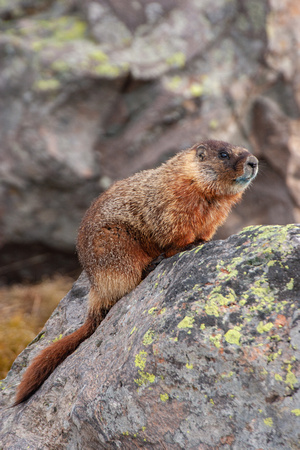 Marmot, Yosemite National ParkThe marmots background appears much closer in the image that it was in reality. Marmot, Yosemite National ParkThe marmots background appears much closer in the image that it was in reality.
|
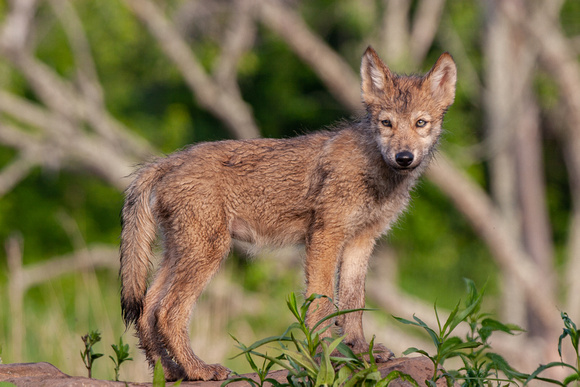 Juvenile Gray Wolf (model)This background is pulled very close to the pup because of the telephoto lens and the slight blurring allows him to stand out while still giving a sense of his environment. Juvenile Gray Wolf (model)This background is pulled very close to the pup because of the telephoto lens and the slight blurring allows him to stand out while still giving a sense of his environment.
|
| Both the longer focal length and distance to the subject creates an illusion that objects that are farther away are larger, which compresses the subject and background. |
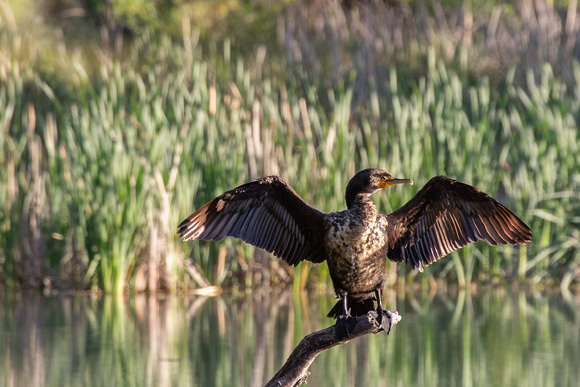 Cormorant, American RiverThe background in this image is actually quite far from the subject but because I was also far from the subject and zoomed in at 400 mm, it gave the illusion that the background was closer. The softness of the background is also a nice contrast to the sharp focus on the subject. Cormorant, American RiverThe background in this image is actually quite far from the subject but because I was also far from the subject and zoomed in at 400 mm, it gave the illusion that the background was closer. The softness of the background is also a nice contrast to the sharp focus on the subject.
|
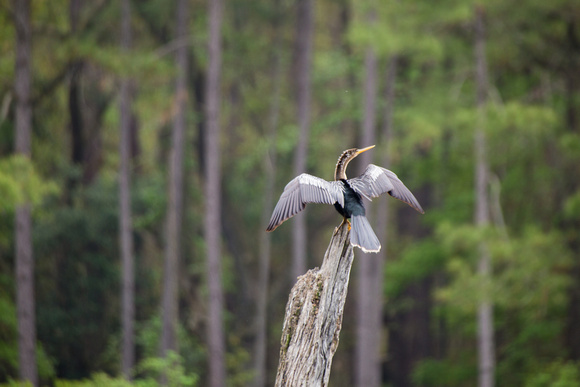 Anhinga, Harris Neck Wildlife RefugeHere is another image where the background is pulled closer, but because it was so far away, you can still see enough details to get a sense of the birds environment. Anhinga, Harris Neck Wildlife RefugeHere is another image where the background is pulled closer, but because it was so far away, you can still see enough details to get a sense of the birds environment.
|
 Egret, American RiverBy compressing the foreground, middle ground, and background, I was able to catch this egret and his misty surroundings along the American River. This gives a sense of place without being too cluttered. Egret, American RiverBy compressing the foreground, middle ground, and background, I was able to catch this egret and his misty surroundings along the American River. This gives a sense of place without being too cluttered.
|
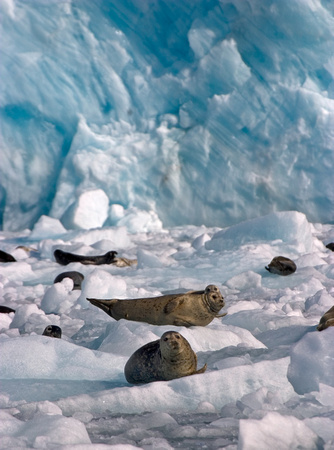 Harbor Seals, Prince William Sound, AlaskaIn this image, the glacier looks fairly close, but it is actually quite far away. As chunks of ice split from the face of the glacier, large waves rippled through the ice that the harbor seals were resting on. It was quite a sight. Harbor Seals, Prince William Sound, AlaskaIn this image, the glacier looks fairly close, but it is actually quite far away. As chunks of ice split from the face of the glacier, large waves rippled through the ice that the harbor seals were resting on. It was quite a sight.
|
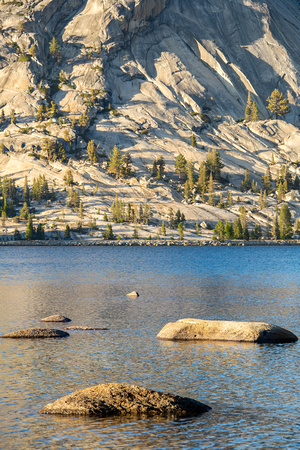 Boulders in Tenaya Lake, Yosemite National ParkThe large granite dome in the background of the lake is quite far away from these boulders, but by zooming in, it appears much closer than in reality Boulders in Tenaya Lake, Yosemite National ParkThe large granite dome in the background of the lake is quite far away from these boulders, but by zooming in, it appears much closer than in reality
|
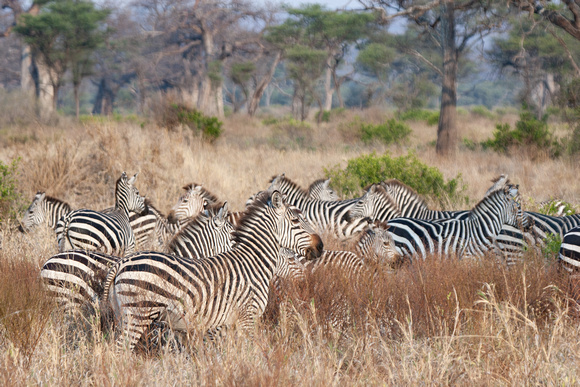 Zebra herd, TanzaniaThese zebras stand in large herds in these open forested areas that become noise and clutter when shot with a wide angle lens. The longer focal length has compressed the trees in the background with the zebras, giving a more interesting composition. Zebra herd, TanzaniaThese zebras stand in large herds in these open forested areas that become noise and clutter when shot with a wide angle lens. The longer focal length has compressed the trees in the background with the zebras, giving a more interesting composition.
|
| Longer lenses, or focal lengths, have a very narrow field of view than wide angle lenses. This is part of the magic that allows you to fill the frame with the subject without getting too close. And - this is also why nature photographers tend to have at least one long lens in their arsenal. Personally speaking, I like to keep a healthy distance from the wildlife I am trying to photograph, and a telephoto lends allows me to do that. |
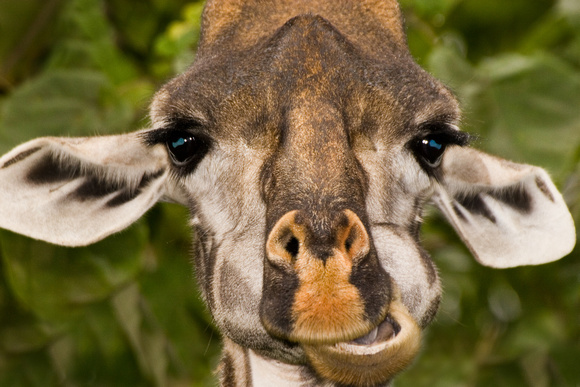 Giraffe, TanzaniaThis giraffe was extremely generous with his time while he munched on branches from the surrounding trees. The slightly blurred, green background is a nice contrast to his warmer toned face. Giraffe, TanzaniaThis giraffe was extremely generous with his time while he munched on branches from the surrounding trees. The slightly blurred, green background is a nice contrast to his warmer toned face.
|
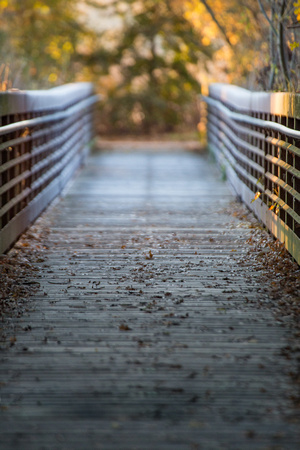 Bridge, Cosumnes River PreserveThe depth compression combined with the warm tones of the fall foliage give this bridge photo a unique perspective. Bridge, Cosumnes River PreserveThe depth compression combined with the warm tones of the fall foliage give this bridge photo a unique perspective.
|
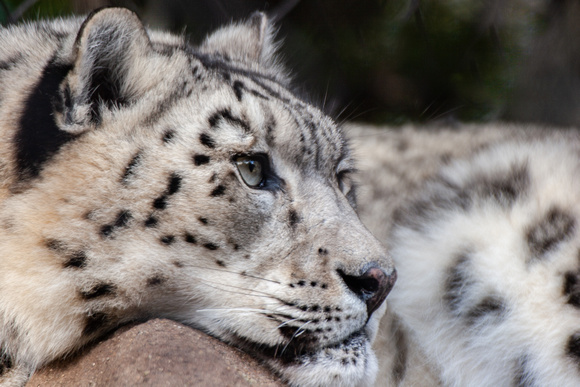 Snow Leopard, Sacramento ZooShooting at the zoo is always challenging because of fencing. Because I was able to get some distance from the snow leopard and surrounding fence, I was able to blow it right out. Snow Leopard, Sacramento ZooShooting at the zoo is always challenging because of fencing. Because I was able to get some distance from the snow leopard and surrounding fence, I was able to blow it right out.
|
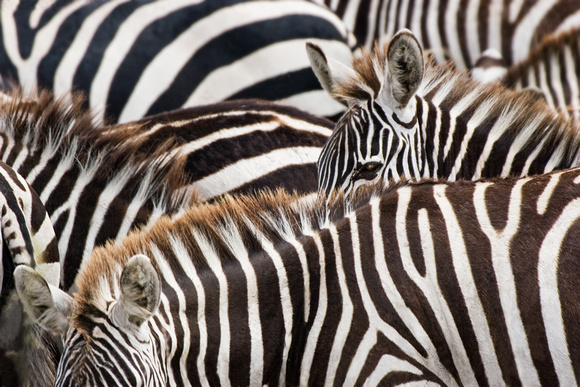 Zebra herd, TanzaniaThis was an incredibly tight shot to compress a large herd of zebras, creating a more graphical image. Zebra herd, TanzaniaThis was an incredibly tight shot to compress a large herd of zebras, creating a more graphical image.
|
| Consider how much farther you tend to be from the subject when shooting telephoto vs a wide angle. |
 Waterfowl, Greylodge Wildlife RefugeThis image is part wildlife image, part graphic. Zooming in from afar allowed me to capture enough detail so that the viewer could see what the subjects are while still allowing enough background to make sense of the environment the live in. Waterfowl, Greylodge Wildlife RefugeThis image is part wildlife image, part graphic. Zooming in from afar allowed me to capture enough detail so that the viewer could see what the subjects are while still allowing enough background to make sense of the environment the live in.
|
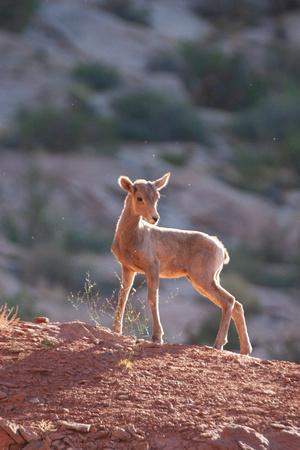 Juvenile Big Horn Sheep, Arches National ParkI got lucky that this juvenile big horn sheep was frolicking on a hill just after sunrise. While the background is compressed, it is in shade,which helps the subject stand out even more. Juvenile Big Horn Sheep, Arches National ParkI got lucky that this juvenile big horn sheep was frolicking on a hill just after sunrise. While the background is compressed, it is in shade,which helps the subject stand out even more.
|
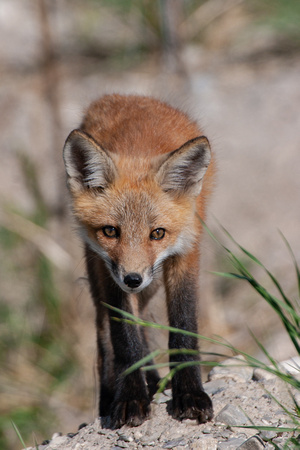 Red FoxThis fox's environment was filled with all kinds of distracting elements. He was a bit curious but I still needed to keep my distance which allowed me to capture him and hints of his environment without being too cluttered. Red FoxThis fox's environment was filled with all kinds of distracting elements. He was a bit curious but I still needed to keep my distance which allowed me to capture him and hints of his environment without being too cluttered.
|
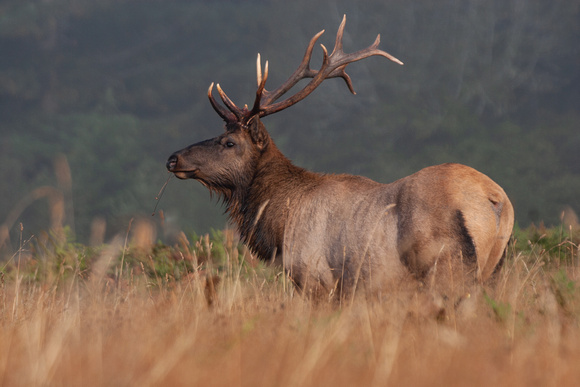 Roosevelt Elk, Redwoods National ParkThese elk can sometimes be found in a massive meadow with redwoods in the distance. This image makes it seem like the trees are much closer than they were in reality, and made for a nice contrast to his warmer toned fur. Roosevelt Elk, Redwoods National ParkThese elk can sometimes be found in a massive meadow with redwoods in the distance. This image makes it seem like the trees are much closer than they were in reality, and made for a nice contrast to his warmer toned fur.
|
| Depth of field is affected by the aperture you choose, but also by focal length. Anything in the frame that is not in focus at (let's say 400 mm) is going to appear much softer than it would at 40 mm. |
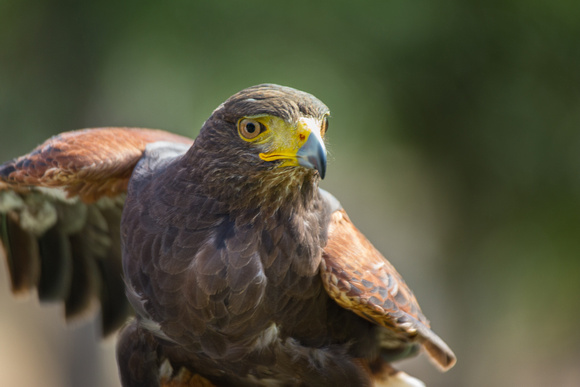 Harris Hawk (falconry program)Shooting this hawk from a distance caused his background (which was far from him) to completely blur, providing some nice but complimentary negative space. Harris Hawk (falconry program)Shooting this hawk from a distance caused his background (which was far from him) to completely blur, providing some nice but complimentary negative space.
|
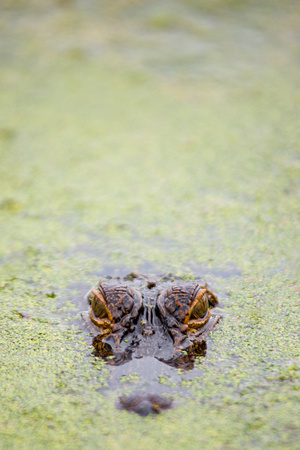 Alligator, Harris Neck Wildlife RefugeWhile the background in this image does not contain any major distractions, the reduces focus gives more weight to the focus in his eyes. This one also takes advantage of the compositional element of negative space. Alligator, Harris Neck Wildlife RefugeWhile the background in this image does not contain any major distractions, the reduces focus gives more weight to the focus in his eyes. This one also takes advantage of the compositional element of negative space.
|
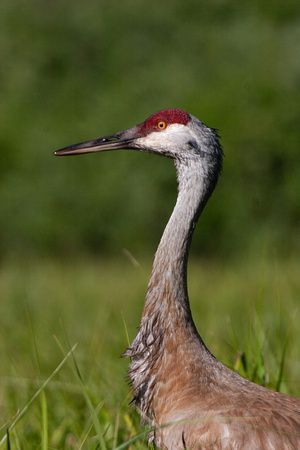 Sandhill Crane, Tetons National ParkThis sandhill crane was foraging in a swampy meadow and allowed me to hang out to get a few photos of him from afar, which only helped to improve the quality of the background situation. Sandhill Crane, Tetons National ParkThis sandhill crane was foraging in a swampy meadow and allowed me to hang out to get a few photos of him from afar, which only helped to improve the quality of the background situation.
|
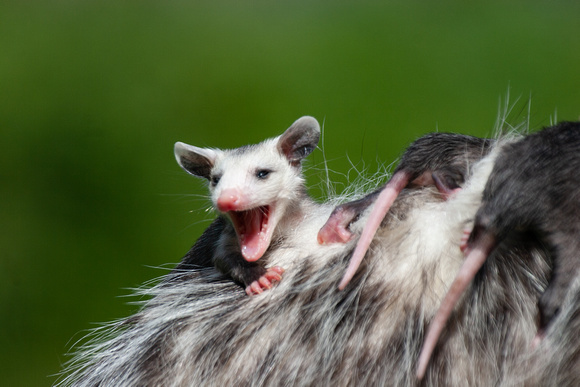 Baby opossum (model)This little guys face isn't getting any attention drawn away by a distracting background, thanks to a long focal length. Baby opossum (model)This little guys face isn't getting any attention drawn away by a distracting background, thanks to a long focal length.
|
 Pelicans, Elkhorn Slough, MontereyThis group of pelicans was shot at 400 mm from a boat. The flattening of the image combined with the groups poses gives a nod to a family photo. Pelicans, Elkhorn Slough, MontereyThis group of pelicans was shot at 400 mm from a boat. The flattening of the image combined with the groups poses gives a nod to a family photo.
|
 Adult and juvenile gray wolf (model) Adult and juvenile gray wolf (model)
|
| This is a great tool to have at your disposal because it also allows you to isolate your subject and remove any distractions. |
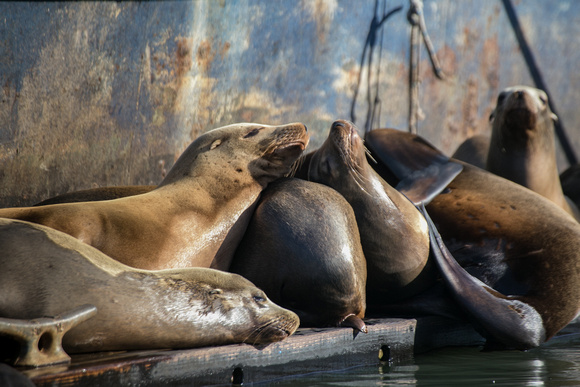 California Sea Lions, Elkhorn Slough, MontereyThese sea lions were stretched out along a dock near a boat. Shooting at a long focal length, and at an angle, allowed me to keep all the sea lions and their nautical background in the frame. California Sea Lions, Elkhorn Slough, MontereyThese sea lions were stretched out along a dock near a boat. Shooting at a long focal length, and at an angle, allowed me to keep all the sea lions and their nautical background in the frame.
|
 Big Horn Sheep, Zion National ParkThe red rock that this bighorn sheep calls home is a great element to include in the photo. Having the ability to compress it with the foreground and throw it out of focus helps the subject stand out while paying homage to his surrounding home. Big Horn Sheep, Zion National ParkThe red rock that this bighorn sheep calls home is a great element to include in the photo. Having the ability to compress it with the foreground and throw it out of focus helps the subject stand out while paying homage to his surrounding home.
|
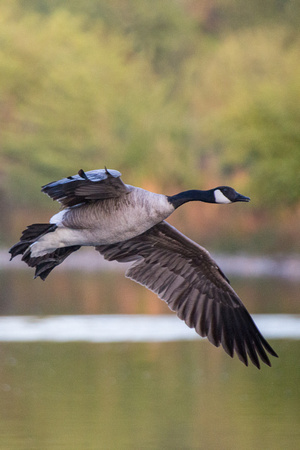 Canadian Goose, American RiverHere is another shot where the background appears much closer than it is, but is blurred out enough to allow the subject to stand out, while still giving a sense of his environment. Canadian Goose, American RiverHere is another shot where the background appears much closer than it is, but is blurred out enough to allow the subject to stand out, while still giving a sense of his environment.
|
 Turkey, Effie Yeaw Nature PreserveThese clumps of grass look much larger than in reality because I used a telephoto lens. Having a good overcast day helped to bring out the bright colors as well. Turkey, Effie Yeaw Nature PreserveThese clumps of grass look much larger than in reality because I used a telephoto lens. Having a good overcast day helped to bring out the bright colors as well.
|
| I hope you enjoyed this tutorial and tour of compression photos. Stayed tuned for what "D" stands for. . . |




























